Film Name: 碟中諜8:最終清算 / Mission: Impossible – The Final Reckoning
It’s been a while since I last went to the cinema with such eager anticipation to watch a movie, but “Mission: Impossible – The Final Reckoning” (hereinafter referred to as “The Final Reckoning”) reignited my long-lost passion—simply because, from every angle, it can be considered the culmination of the 30-year-long “Mission: Impossible” series.
Given that I had already received a lot of feedback from viewers about the film (such as the dramatic scenes being too long and weak, and the action scenes in the latter half being more prominent), my overall impression of the film was still quite good.
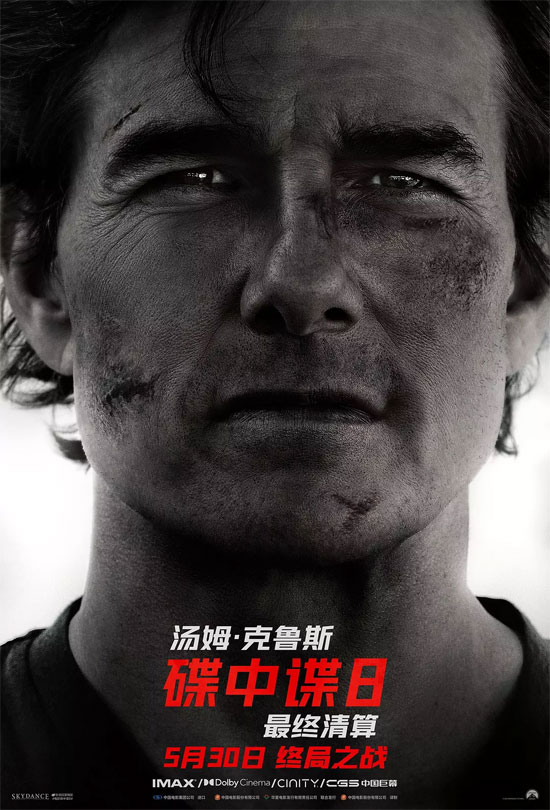
To be honest, watching Tom Cruise run from age 34 to 62, with the IMF still risking everything to save the world, “The Final Reckoning” doesn’t have much “aesthetic appeal” left… However, seeing Tom Cruise still able to pull off one “impossible mission” after another, whether in the sky or underwater, is the biggest surprise of all.
This also brought back memories of why I used to love watching Hollywood blockbusters: those filmmakers wielding the magic of the film industry to create one unimaginable audiovisual miracle after another on the big screen.
[Friendly reminder: The following text contains spoilers.]
Although I generally approve of “The Final Reckoning,” I’ll start by addressing the film’s biggest flaw: the dialogue-heavy scenes in the first half are indeed inefficient and overly lengthy. Previous Mission: Impossible films did not have such issues (or if they did, they weren’t this severe).
The film spends a significant amount of time emphasizing how powerful the AI is and how terrifying it would be if it were to take control of the world, as well as how desperate the U.S. government and the IMF team are in their fight against it. However, the information presented is limited, and in an era where efficiency and speed are prioritized, this approach goes against the grain for a commercial film.
Additionally, the film seems determined to capitalize on the nostalgia of the entire series, but in my opinion, this is unnecessary.
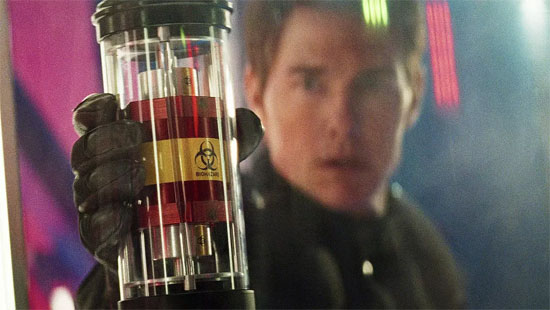
“The Final Reckoning” incorporates numerous iconic scenes and highlights from the previous seven films to showcase its nearly 30-year legacy and attempt to evoke viewers’ memories of past installments.
However, as an action-espionage series, the connection between each “Mission: Impossible” films is actually quite weak. Forcing together many past plot threads and characters feels contrived and forced, especially between the first and third films. Watching Christopher McQuarrie fill in the gaps from 20 years ago for J.J. Abrams feels both amusing and frustrating.
Of course, I’m not saying that “The Final Reckoning” failed to capitalize on nostalgia. The film handled several old characters quite well, earning significant nostalgia points. For example, having William Tangloi from the first film return with a new look, join Ethan’s team, and return the dagger from years past was a heartfelt touch.
Even better was the “sacrifice” of Luther.
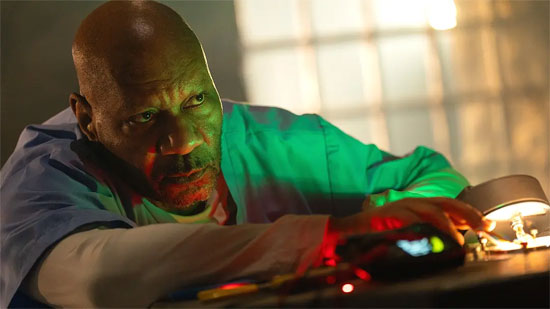
Apart from Ethan Hunt, Luther Stickell, portrayed by Ving Rhames, is the only character who has appeared throughout the entire Mission: Impossible series. The film’s portrayal of Luther’s sacrifice is neither rushed nor grandiose; instead, it chooses to depict a quiet yet profound moment, using concrete actions to illustrate the professional integrity and career philosophy of an experienced agent.
Watching the elderly, ailing Luther complete the electronic virus, then calmly bid farewell to Ethan as he walked toward destruction during the bomb disposal, and finally achieve transcendence through a recording after completing the mission… his words were ordinary, yet they possessed a magical ability to comfort the heart in any crisis.
Additionally, “The Final Reckoning” unprecedentedly strengthens the IMF team’s collaboration, offering a far richer experience than past films that focused solely on Ethan’s solo performances.
In previous Mission: Impossible films, IMF team members were certainly indispensable, but their roles and actual contributions were more about supporting Ethan… In “The Final Reckoning,” however, they are truly equal partners and indispensable.
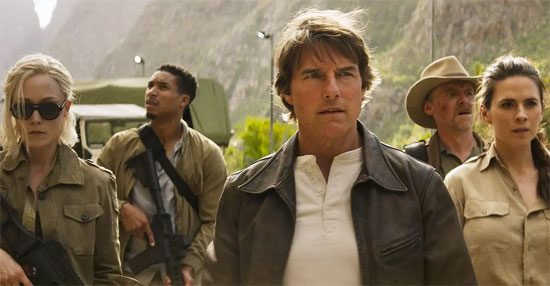
Ethan only handles the most dangerous action sequences in the film, delegating the rest to the IMF team. He entrusts the “true female lead,” Banji, to take on the role of new team leader, completing critical tasks such as locating the submarine coordinates, ice sea rescue, and sealing the AI entity while he is offline.
Grace and Paris, who debut in Mission: Impossible 7, also play more defined roles—the former is a master thief who can time her moves perfectly, while the latter is a swift and skilled assassin. Both are excellent support characters when they find their direction.
It must be said that this feels better than watching Ethan’s solo act, especially during the climactic scenes, where the editing of different locations better highlights the difficulty and complexity of the “impossible mission.”
Next, I’ll start praising the two action sequences in “The Final Reckoning” that received the most effort, had the best actual effects, and are my personal favorites: the submarine exploration and escape, and the twin-wing aircraft sequence.
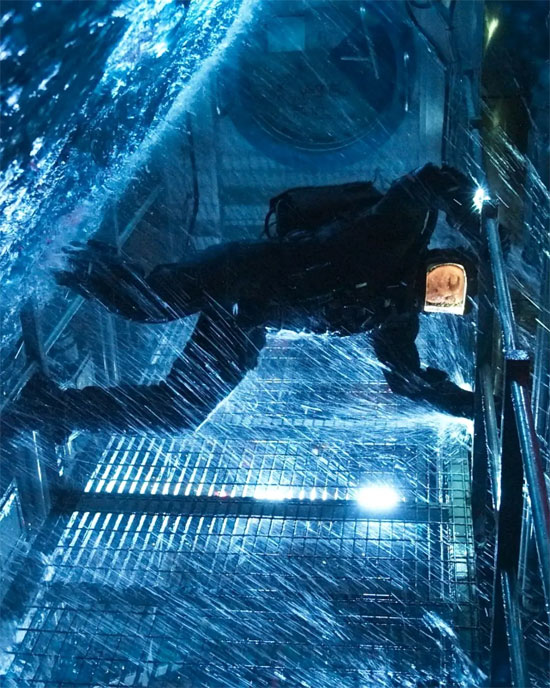
To this day, I still remember a scene from the James Bond movie “The Spy Who Loved Me” that I watched over 20 years ago. Roger Moore, playing Bond, was wearing a diving suit and awkwardly fighting his opponents. It was slow, dull, and unforgettable, leaving a deep impression on me: underwater action scenes are extremely difficult to film and rarely stand out.
Indeed, over the years, few blockbusters have dared to tackle underwater action sequences, and the only one truly worth mentioning is the underwater cinematography in “Avatar: The Way of Water”… In “The Final Reckoning,” the production team attempted heavy-duty diving and fixed-scene displacement transitions, achieving a high level of completion and strong visual appeal.
My favorite part of this scene is the submarine designed as a slowly sinking drum. Besides the external risks from the countdown, the submarine’s interior is also fraught with danger. Ethan must navigate through the constantly changing, confined space, avoiding obstacles including a nuclear warhead, and after obtaining the horseshoe, he must find a new way out.
Meanwhile, the rolling submarine allows the seawater inside to exhibit irregular accumulation and flow, significantly enhancing the freshness and fun of the underwater action.
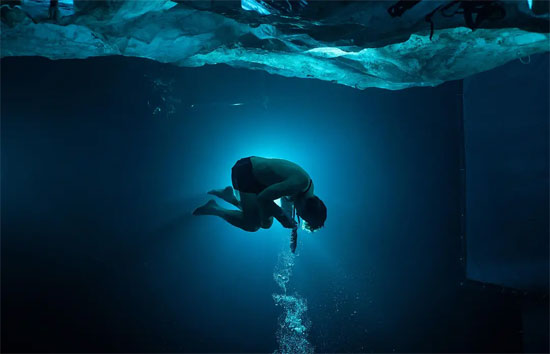
Just watching Tom Cruise perform those actions in a heavy diving suit is exhausting, let alone filming them in person—the effort and hardship are immense…
When Ethan is forced to remove his diving suit and surface naked under immense water pressure, returning to the ice in a fetal position, my first reaction was not only “the indestructible Hunter Superman” but also “even if it’s fake, I’d give this scene a perfect score—it’s amazing!”
As for the scene where Ethan climbs the plane at the end, it might seem a bit counterintuitive—after all, under director Christopher’s lens, Ethan has already climbed a plane in Mission: Impossible 5, had a HALO jump and a helicopter battle in Mission: Impossible 6, and low-altitude gliding in Mission: Impossible 7 (all directed by him)— —but it’s actually incredibly impressive.
The most crucial aspect is that it’s all practical effects, and there’s plenty of it.

The highlights and challenges of the scenes mentioned earlier lie in the initial design and actual execution. Once completed, they offer only a few moments of intense satisfaction. However, the sequence in “The Final Reckoning” where Ethan climbs two biplanes is the opposite: it starts off simple but becomes challenging due to the prolonged 360-degree high-intensity flight.
As a century-old aircraft, biplanes are no longer mainstream and don’t seem particularly dangerous. However, they offer numerous points of contact, making Ethan’s climb feel like placing Jackie Chan in a furniture store filled with chairs—everywhere is a scene!
Moreover, both the red and yellow biplanes were flying in the sky, making any filming an extremely challenging endeavor. After all that effort, it was no easy feat.
What stood out most to me in this scene was Tom Cruise being blown into a mushroom shape by the wind, completely losing his composure. Yet this bittersweet moment, both humorous and poignant, perfectly illustrates the allure of practical effects.

Compared to the current mainstream special effects shots, the live-action shots in this film lack some of the polish and design of beautiful actions, but the advantage is that they pursue the ultimate in realism and offer the unique enjoyment of achieving ingenuity through hard work.
Given this, I believe “The Final Reckoning” is a fitting conclusion to the series. It once again accomplishes the impossible and leaves the story at a point that isn’t perfect but is still acceptable to most viewers.
Finally, I would like to once again thank the film’s creators for delivering a refreshing visual and auditory feast.
While it is easy to dismiss Hollywood films as subpar nowadays, and there are indeed many lackluster blockbusters, “The Final Reckoning” once again demonstrates Hollywood’s deep-rooted strengths, particularly in many niche genres where it holds advantages worth emulating and pursuing.

I hope that in the future, we will continue to see many excellent domestic and international blockbusters. This is my simplest wish and personal desire as an ordinary audience member.
Please specify:Anime Phone Cases » Mission: Impossible – The Final Reckoning 碟中諜8:最終清算 2025 Film Review: Still capable of surprising people